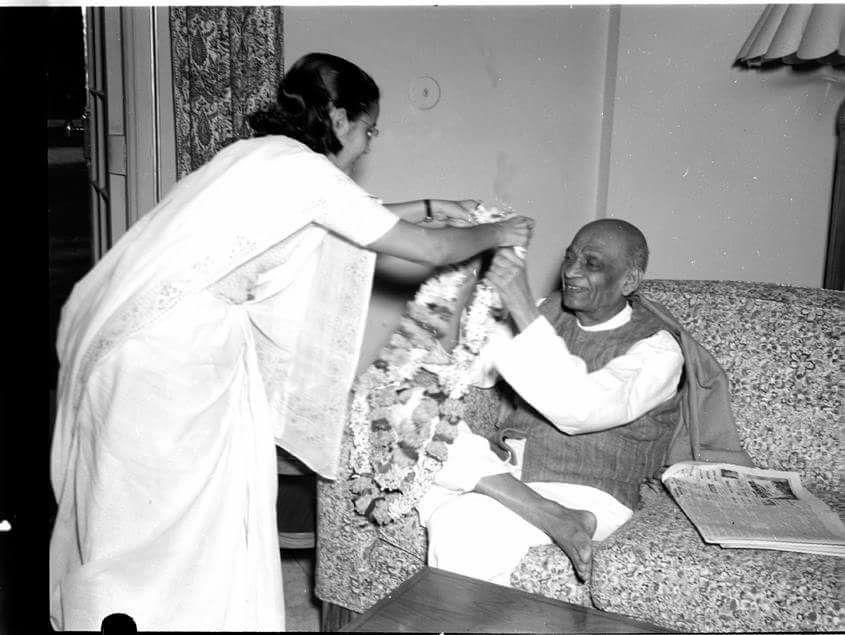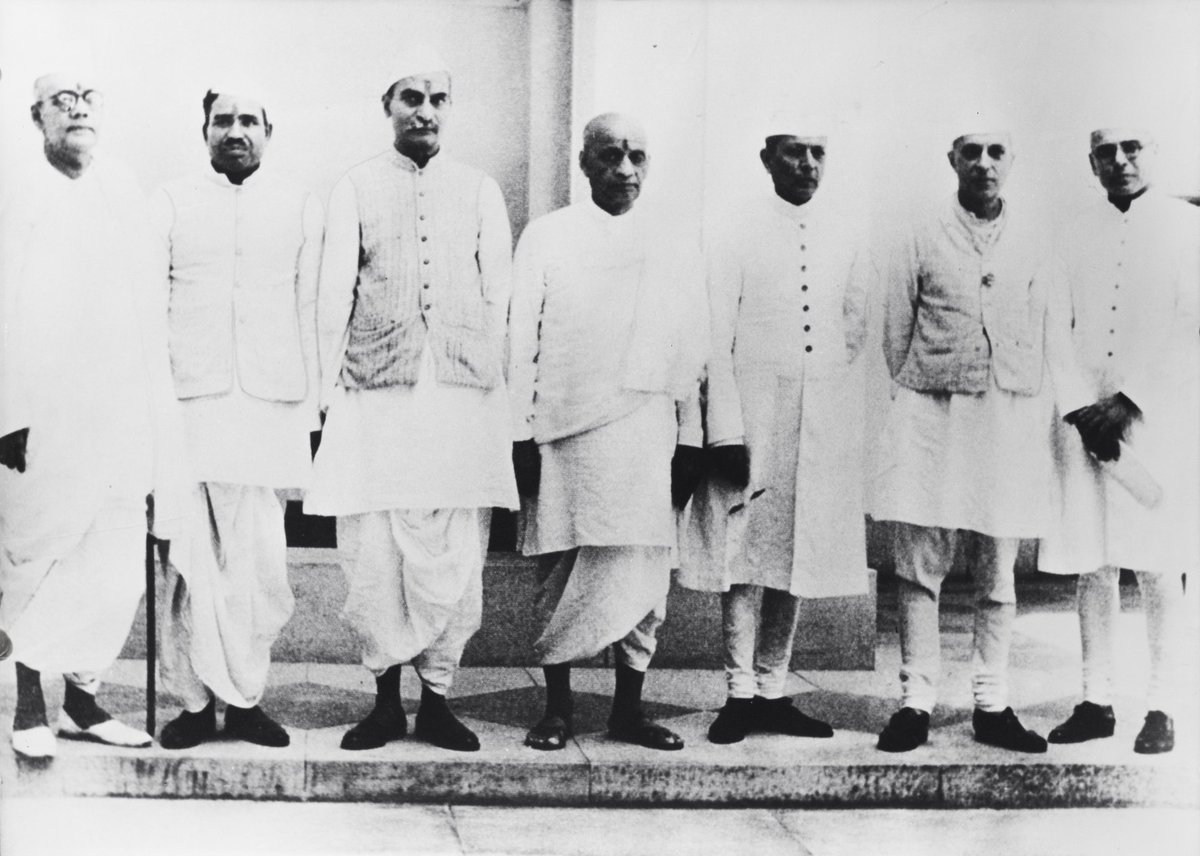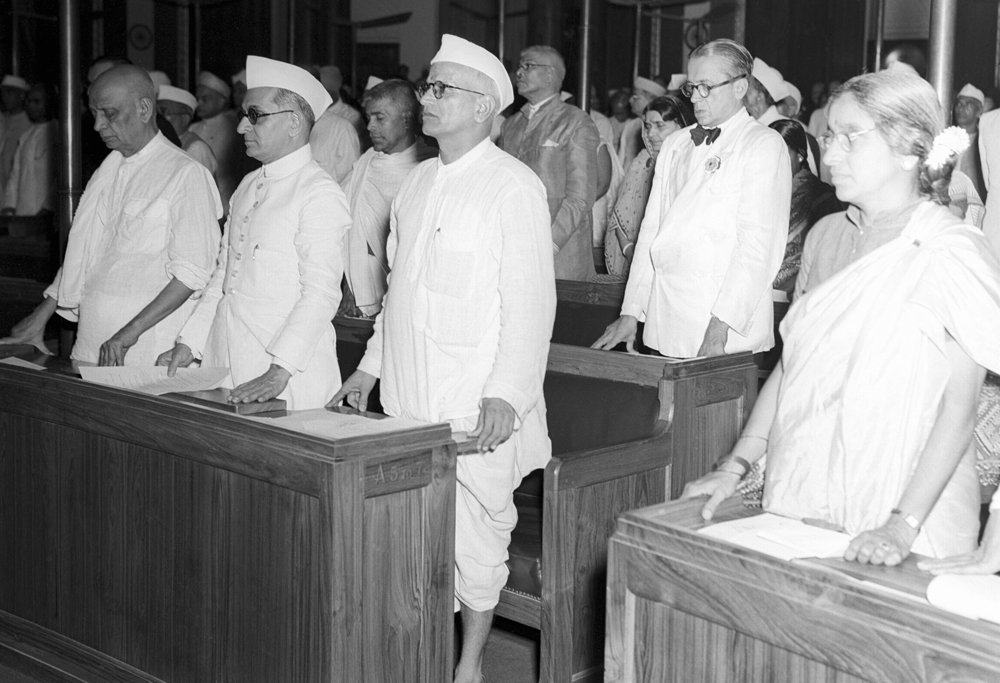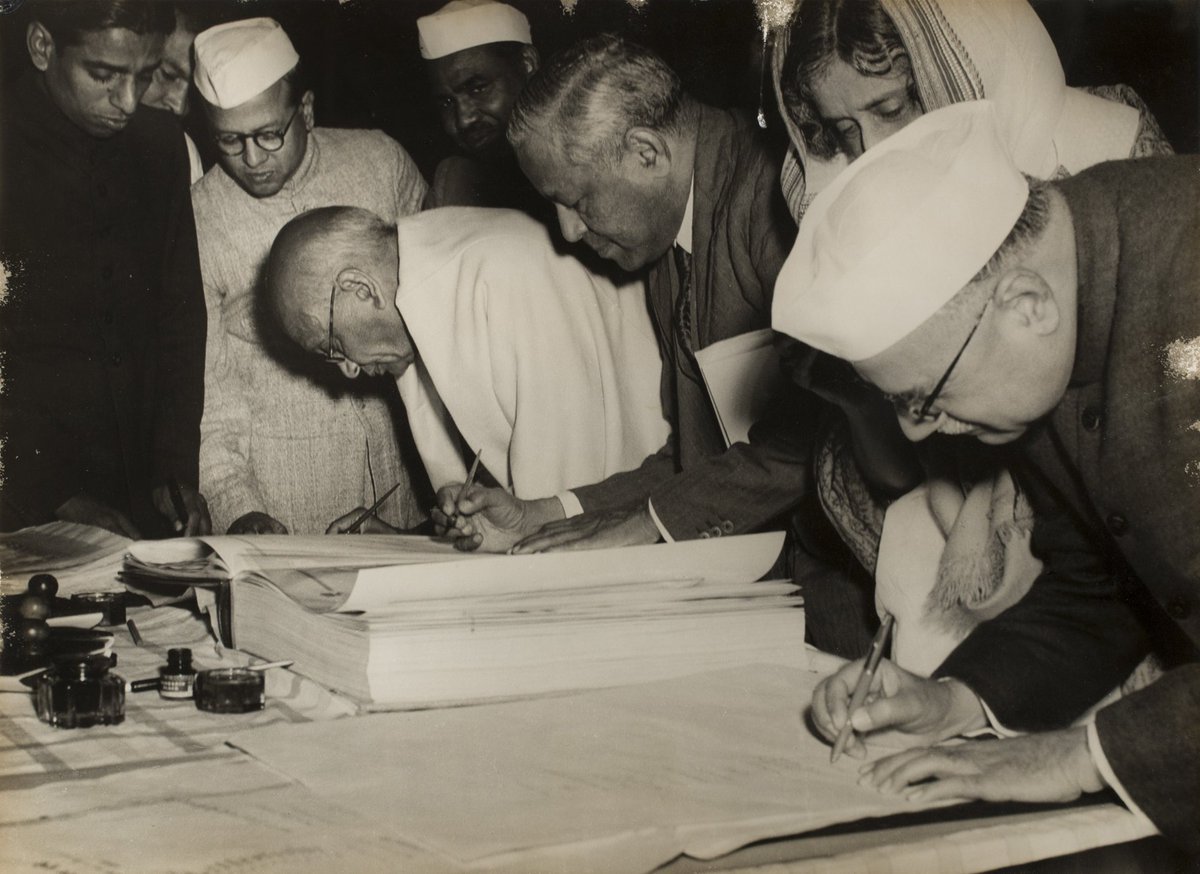When Iron Man Built The Steel Frame: Why Sardar Patel Is The ‘Patron Saint’ of the IAS
Four months before India attained Independence, India's first Home Minister spoke to its first batch of IAS officers. Find out how he wanted them to move from ‘Swarajya’ to ‘Surajya’! #SardarPatel

Four months before India began its “tryst with destiny”, the nascent nation’s first Home Minister, Sardar Vallabhbhai Patel, who played a critical role in integrating the princely states into the Indian Union, spoke to the first batch of Indian Administrative Service officers at Metcalf House in Delhi.
In that special address on April 21, 1947, Patel outlined the task before civil servants in an Independent India and laid down certain principles of ‘Surajya’ or good governance.
“Your predecessors were brought up in the traditions in which they … kept themselves aloof from the common run of the people. It will be your bounden duty to treat the common men in India as your own,” he said on April 21, a date marked ever since as ‘Civil Services Day’.
However, his role in establishing of the modern-day IAS institution in place of the British-era Indian Civil Services (ICS) goes a lot further than that landmark address.
Despite the robust spirit of freedom permeating the air, the country itself was in a state of real flux.
Partition and the violent chaos associated with it, the claims of sovereignty from various pockets and economic stagnation were critical features of the time.
Could a sovereign Union of India survive these elements? Would India disintegrate in the face of these complexities and the contradictions? These were genuinely uncertain times.
Only a limited number of civil servants from the British-era Indian Civil Service (ICS) stayed back in India after Independence, as most were British citizens, native to the UK. There were genuine questions about how an Independent Indian government would administer this country.
Fortunately, the nation had Sardar Patel in its corner, and he would go on to establish the modern IAS, which remains as the bedrock of administration in India to this day.
There is a reason why he is called the ‘patron saint’ of the IAS.
Patel’s association with civil servants extends long before he took over as the Home Department of the interim Indian government. Before he stepped into the freedom struggle, Patel was a very successful barrister in Ahmedabad who often dealt with British civil servants on issues concerning law and order in the city.
However, his real engagement with the British ICS came when he was elected to the Ahmedabad municipality. He had to seek the cooperation of experienced British ICS officers and coordinate with them to fulfil his obligations. Even after he quit his post and joined the freedom struggle full time, he maintained contacts with British civil servants and their native subordinates, discovering among other things, how they operated.

In fact, as early as 1939, he played an active role in resolving a dispute with ministers of the erstwhile Central and Berar provinces, assisting civil servants posted in both provinces.
“Sardar’s vast experiences in administration enabled him to realise the true importance of Indian civil servants who had worked with great loyalty under the British rulers. He understood that after Partition when the British officers would leave the country, there was going to be an administrative gap as we did not have enough experienced and efficient civil servants to administer a vast country like India. And if those experienced civil servants were not taken into confidence and retained in service, there would be practically no good administrator left,” says this paper.
Leaders of the Indian National Congress, heavily invested in the freedom struggle as they were, knew little about the technicalities of administration. They needed able administrators once the British left. Despite staunch opposition from other freedom fighters, Patel began building a team of efficient and able officers who would prop up the nation’s administrative machinery.
“You can realise what a year-old government has to do to maintain peace and bring about prosperity. The steel frame on which India relied so far is now broken….50% of which was foreign went across the seas. Partition further weakened it… We have only a small number of civil servants left…outsiders cannot appreciate their work. Many of them loyal workers and patriots are working with us night and day. All we have been able to achieve whether it be in the sphere of states or in Kashmir or in any other theatre, have been possible only because of their loyalty and wholehearted support,” said Patel, during a speech on October 15, 1949.
Working through these turbulent times with this team civil servants further strengthened the conviction in his mind that they were indispensable.
He also understood that in the ranks of the ICS, unlike the British officers, the native Indians were caught between the rising tide of nationalistic fervour and the performance of their duties. Patel understood the frustration and the doubt such a scenario had created in their minds.
They were just doing their job, and Patel knew it even if it came at the expense of freedom fighters being sent to prison. Understanding how critical they were to the process, Patel took the Gandhian route by welcoming them with open arms.

“Sardar’s heart was big enough to appreciate merit and he wanted the services to be steadfast to their traditions of efficiency, impartiality and equality. Of their fidelity, he was fully convinced. He has tested them in the turbulent days of 1946-47 and had no doubts about their loyalty…Sardar was one of the politicians who realised the important contribution the services had made to the stability of the country,” writes KL Punjabi, author of Life and Work of Sardar Vallabhbhai Patel.
However, the real test for Patel came after Independence.
“I wish this to be recorded in this house that during the last two or three years if most of the members of the services had not been serving the country efficiently, practically the Union would have collapsed,” he said in an October 10, 1949 address to the Constituent Assembly.
Nonetheless, Patel’s decision to retain officers of the old ICS was vehemently opposed by many leaders of the freedom struggle. Those opposing the retention of ICS officers believed they weren’t trustworthy and that they had actively participated in the arrest and harassment of freedom fighters.
Even India’s first Prime Minister Jawaharlal Nehru wasn’t very keen on retaining them.
Also Read: What Should The Future of The IAS be? Here’s What Officers Have to Say
In the Constituent Assembly debates, arguments on the subject often reached boiling point, but Patel held the fort and eventually had his way.
“The manner in which he [Patel] won over for India the loyalty of the services to consolidate to the new-born freedom was a marvellous piece of statesmanship,” writes Jairamdas Daulatram, a veteran Sindhi leader of the Independence movement.
It wasn’t just a case of greeting the ICS with open arms, but instituting a necessary structural framework for their functioning and offering them constitutional safeguards once the initial turbulence was over.
As per the framework put forward by the Cabinet Mission Plan in 1946, the erstwhile British Secretary of State Services would be abolished once the transfer of power is in motion, leaving Indian officers of the ICS in a spot of bother.
The British Foreign Secretary had argued that members of ICS could choose whether to stay in service or leave once the transfer of power happens.
On October 10, 1946, a meeting was called between the Prime Minister of the various British India provinces to discuss how the administrative machinery would function following the transfer of power under the chairmanship of Sardar Patel, head of the Home Department, Interim government.
“The consideration of Sardar was that if the old ICS cadre was changed to a new cadre like the IAS and IPS, there would be a psychological effect on the Indian people. They would welcome the new thinking and outlook. To avoid constitutional and political complications, he introduced the new services,” said a member of the delegation.
Although Nehru and the likes were onboard for the replacement of the ICS with an all-India service, a point of difference emerged on the recruitment and executive control of these officers, besides whether they would come under the control of Central or Provincial governments. Provincial autonomy was a major issue considering the diverse communities that inhabited this Union.

GB Pant, a leader of the freedom struggle from Uttar Pradesh, wasn’t very keen on the idea of an all-India service, while T Prakasam of Madras Province sought the complete control of these civil servants under provincial governments, including powers of recruitment and dismissal from service.
However, Patel remained firm in his position as BB Misra in his book ‘Bureaucracy in India’, writes:
“He [Patel] recognised the necessity of adequate allowance for provincial susceptibilities, especially in a country inhabited by multicultural communities. But, it was precisely for the protection of these susceptibilities that centrally controlled all-India service was considered all the more important.”
Thus, “the new setup provided for organising an all-India administrative services in line with the previous ICS and a provincial service under the control of the provincial government. It was suggested that the officers of the provincial services would be promoted to central services on quota and seniority basis. The IAS was suggested to be controlled by the Federal (Union) Public Service Commission of the Central Government, though the officers might be posted in various provinces”.
Also Read: The Making of A Nation: How Sardar Patel Integrated 562 Princely States
He believed central control over the provinces was necessary for maintaining India’s integrity. For recruitment, meanwhile, it was decided in the meeting that there would be a combined exam for both the Indian Foreign Service and IAS, a proposition put forth by Pant.
Once the contours of this new administrative system were established, serious planning went into determining the process of recruitment, training, posting and payment of salaries.
Similar arrangements were also put in place for civil servants working in other departments of government, and the shortfall in IAS officers was overcome by promoting officers from the provincial services and recruiting personnel from the war services.

Such foresight allowed Patel and his team of civil servants to overcome the turbulence that came with the transfer of power.
Another critical contribution of Patel to the cause of future IAS officers was his steadfast determination to ensure these officers were backed by necessary constitutional safeguards following their yeoman service to the nation in times of turbulence.
Once again, there were leaders opposed to the idea, believing that these civil servants were nothing but agents of the British government.
“This guarantee means that they were the rulers under the old regime and that they will continue to be so in this new regime. This guarantee asks us to forget that these persons were all still in service–400 of them–committed excesses thinking this was not their country,” said Ananthasayanam Ayengar, a bitter critic of the ICS.
Patel, however, was once again unmoved.
“I tell you, do not quarrel with the instruments with which you want to work. If you have done with it and decide not to have them at all, even in spite of my pledged word, I will take the services with me and go,” he said during a speech in the Constituent Assembly. Patel, once again, had his way and provisions offering special safeguards to those in the services were inserted into the Constitution under Article 312(2) in Part XIV, giving birth to the modern IAS and IPS.

In October 1951, Parliament passed the All India Services Act, which laid down the rules of recruitment and service conditions. Patel, unfortunately, had met his demise on December 15, 1950, nearly a full year before the All India Services Act was passed in Parliament.
However, by then, Patel had established an institution that has stood the test of time producing officers with a range of capabilities or generalists to oversee different aspects of administration.
The work, the effort and the guidance he had to give to make this is a reality, is truly worthy of any ‘saint’.
(Edited by Vinayak Hegde)
Like this story? Or have something to share? Write to us: [email protected], or connect with us on Facebook and Twitter.
If you found our stories insightful, informative, or even just enjoyable, we invite you to consider making a voluntary payment to support the work we do at The Better India. Your contribution helps us continue producing quality content that educates, inspires, and drives positive change.
Choose one of the payment options below for your contribution-
By paying for the stories you value, you directly contribute to sustaining our efforts focused on making a difference in the world. Together, let’s ensure that impactful stories continue to be told and shared, enriching lives and communities alike.
Thank you for your support. Here are some frequently asked questions you might find helpful to know why you are contributing?


This story made me
-
97
-
121
-
89
-
167













